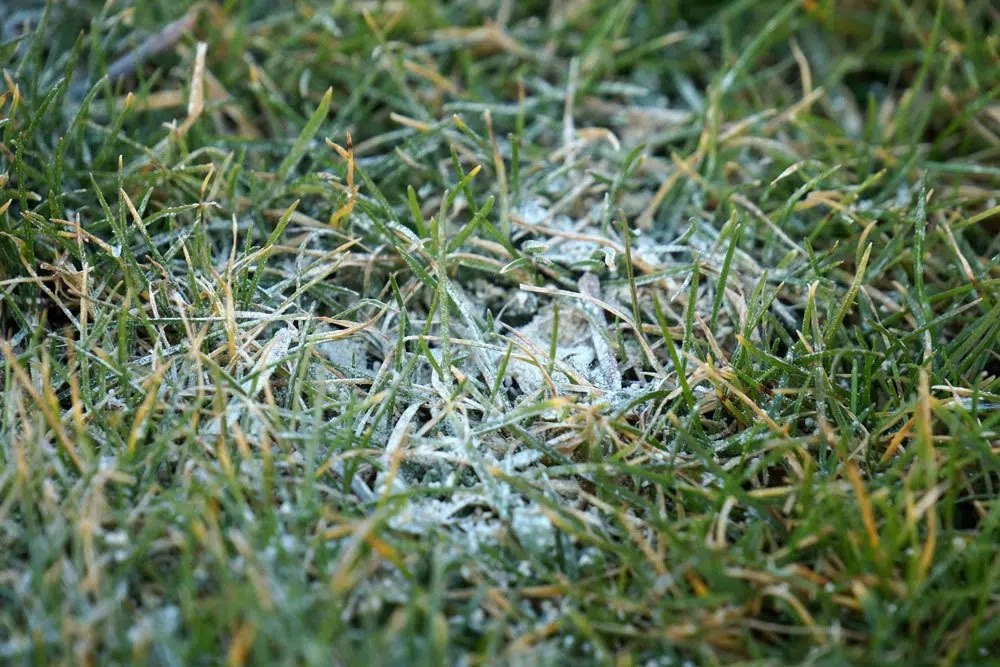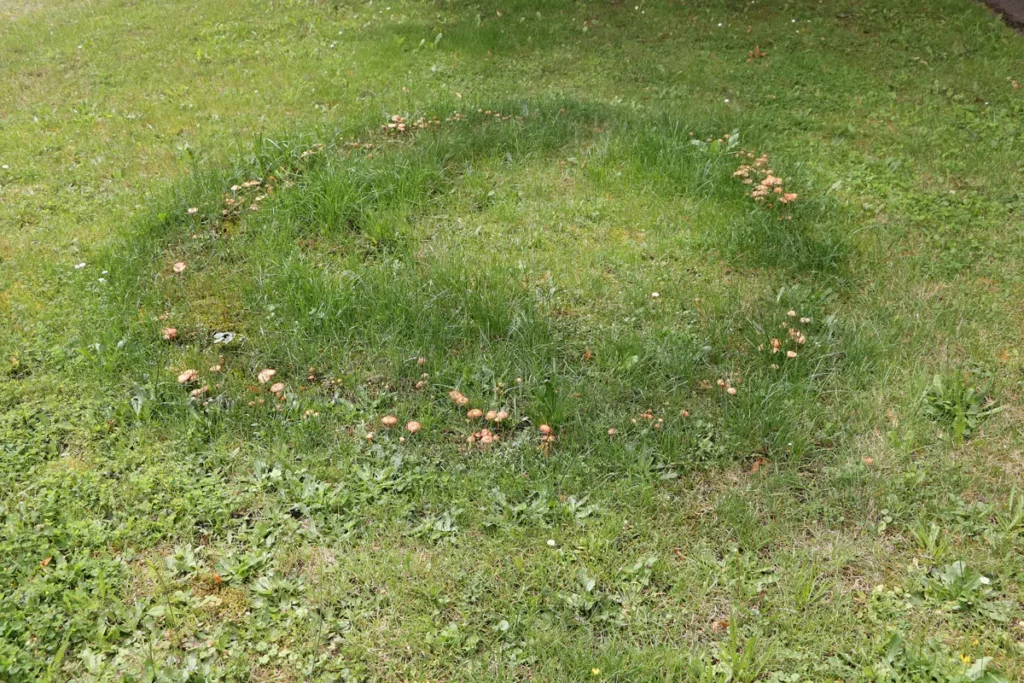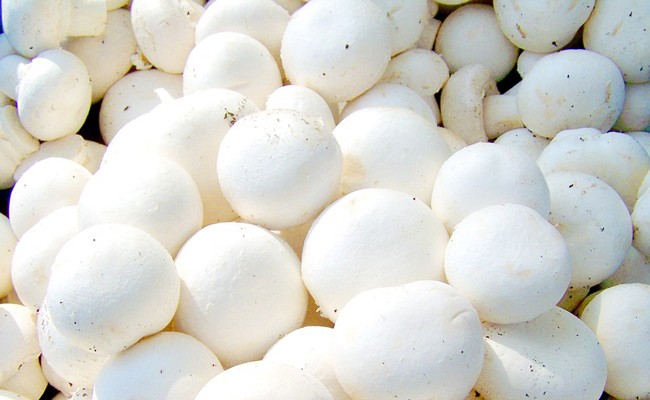The lawn is an ecosystem that includes fungi. Isolated fungi is usually not a problem, if the green is weakened can appear, among other things, black fungi in large quantities.
- Black mushrooms can be poisonous
- Witch rings require quick action, otherwise the turf will be permanently damaged
- Reduction of nutrients in the soil reduces black fungus and can starve the mycelium in the long term
- Dethatching and aerification helps with prevention
- Liming optimizes the pH value, which makes black fungi no longer feel at home
Contents
Identify fungi
As with plants, fungi have different requirements for their location. Knowing exactly which black fungus it is can help control it. Different black fungi can appear on lawns.
There are some species of fungi with black coloring or some species turn black as they age. Some typical fungi that can appear in lawns are:
- Thin-skinned potato bovist (Scleroderma verrucosum)
- Blackening sapling (Hygrocybe conica)
- Punctate fertilizer mushroom (Panaeolus olivaceus)
- Black-blue bald (Psilocybe cyanofibrillosa)
- Small crested pintling (Coprinus sterquilinus)
- Black-blue redling (Entoloma atrocaerulea)
One reason why it is important to know which fungus it is is to be able to assess the potential danger. Mushrooms again the crested thistle would even be edible, but others such as the punctate spurred manure mushroom are poisonous and can be a danger to babies playing in the grass, for example.
For these fungi to colonize lawns, they need suitable site conditions, which include nutrient-rich soil or a suitable pH, for example. If there are suitable temperatures and humidity for a sufficiently long time, the first fungi will sprout within a very short time.
Observe species protection
If you want to fight black fungus in the lawn, you should keep in mind the protection of species. For a fungus to colonize, the conditions must be optimal. Protected species in particular hardly ever find suitable site conditions. If you have a protected fungus in your garden, such as the olive black sapling, which is not poisonous but is considered inedible, you should consider whether the population is justifiable or whether there will be lasting damage to the lawn or even a danger to children or pets.
Witch rings when there is a nutrient deficiency
Fungi have high nutrient requirements. If they find sufficient nutrients in the soil, they spread irregularly and over a large area. Even if black fungi spread over a large area in the lawn, there is usually still no danger to the greenery.
Fungi only become a problem when they form so-called witch rings. In this case, the mushrooms are arranged in a circle and the rings can also become larger. The reason for this ring-shaped arrangement is that the mushrooms in the center have used up the nutrients and thus move further and further away from the place towards new sources of nutrients. Visually, the lack of nutrients can also be seen in the grass. The growth is more puny and often the grass is lighter in the affected areas. Occasionally, mosses may become prevalent in such places as the turf becomes thinner.
Note: You can easily recognize a witch’s ring formation by the fact that the grass first becomes darker in the affected areas. It is the nutrient boundary and the mycelium is already withdrawing nutrients from the soil underground at this boundary.
Control options
If you have determined that fungi are unacceptable in your yard, there are a variety of options available to you that can drive black fungus out of your lawns without fungicides:
- Change water balance
- Reduce nutrients
- Aerate soil
- Change pH-value
- Change light conditions
- mow properly
Both too much and too little water can encourage fungi to grow. Watering in the summer does help the lawn become nice and vigorous, but the water increases moisture in the air and soil, which means you are encouraging fungal growth. A problem area for fungus is areas that are regularly shaded for long periods of time. A simple way to help is to change the light conditions and water properly.
For example, to bring more light to some areas, you can thin out shrubs or trees. It is problematic if, for example, a building provides shade. Here you should take other measures.
This can be, for example, increased or decreased watering of the lawn. If there is a fungal infestation, it helps to water more and thus flush out nutrients. To combat fungus or prevent infestation, follow these steps when watering:
- water when temperatures are below 20°C
- water as needed (not during rainy periods)
- Let the soil dry in between
The ideal time to water the lawn is late evening or night. Thus, the soil has the opportunity to dry up during the day, which also promotes the formation of roots of grasses. If you do not want to water, you can mulch the soil. Here, however, there is a risk that too many nutrients get into the soil, which in turn favors fungi. Especially fungi like the Schopftintling prefer very nutrient-rich and sometimes even over-fertilized areas.
Black fungi are therefore also a sign that you have done a little too well with fertilizing. If you mulch your lawn at least once a week, you can do without additional fertilizer. The advantage is that the balance between fertilization and consumption of nutrients by mulching is very good and it is difficult for fungi to settle.
Care as prevention
One of the reasons why black fungi, or fungi in general, grow in lawns is lack of care. First of all, aerating or scarifying the lawn would prevent fungi, but this is often neglected by garden owners. The mycelium of fungi is only a few centimeters below the ground in many species. By dethatching and aerating, you aerate the soil, which causes the mycelium to dry out and become damaged in the long run.
Dethatching also ensures that the soil gets enough light, which in turn helps you prevent fungus. In order for the fungi to have no chance and for the lawn to develop healthily and vigorously, proper care is important, especially in the spring.
To do this, proceed as follows:
- carry out the first lawn cutting at a height of approx. 10 cm
- scarify the turf
- aerify the turf
- scatter quartz sand and place it in the holes
- spread lawn lime evenly with a spreader truck

Dethatching is still a familiar term to most, but aerating is known to very few amateur gardeners. An aerator has spines several inches long and provides deep aeration. The sand loosens the soil and at the same time introduces drainage, which helps prevent black fungus, especially in very wet and shady areas.
Note: Many black fungi prefer an acidic soil. The wrong pH is one of the reasons why fungi grow in lawns. A simple way to help is to limewash regularly.
Frequently asked questions
Is it necessary to remove black mushroom species before mowing the lawn?
Yes, you should remove the fruiting bodies of the fungi before mowing. This will prevent the spores from spreading over a large area.
When is the best time to remove black fungus?
You can carry out a fungus control all year round. Even in mild winters may appear the black fungi that you need to remove.



